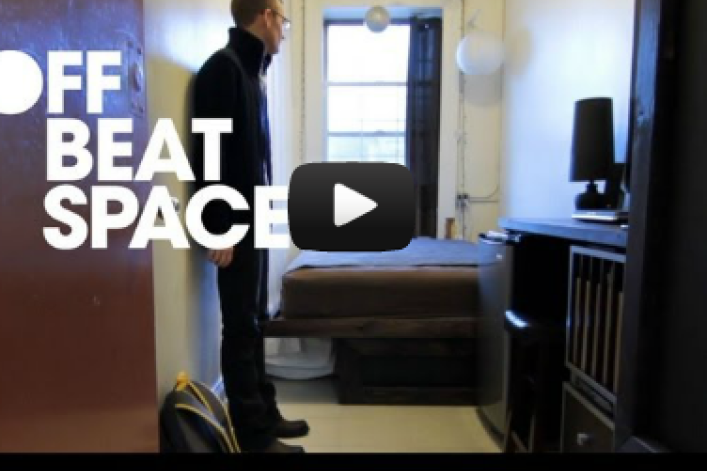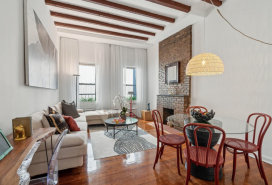10 things I learned from YouTube about living in a micro-apartment

As the author of BrickUnderground's Hell's Bitchen column and someone who's lived in some pretty quirky NYC apartments myself, I was intrigued to come across "Offbeat Spaces," a webseries on YouTube's SPACEStv channel which shows off some wild and totally wacky living spaces.
According to Bradley Werner of DBG, the digital video company behind the channel, the criteria for an apartment to be featured on SPACEStv is twofold: The apartments have to be big on design, and the people living in them must have knowledge of their home's design function and an appreciation for it.
It's also nice when there's a “Whoa, these people are bat sh*t crazy!" element to it (like any sort of reality TV).
Producers believe these episodes will inspire people to incorporate their own, unique personalities into the design of their home, no matter how small the space may be. With that being said, here are the 10 things I learned from watching three episodes of "Offbeat Spaces."
- When one lives in the smallest apartment in America--in 78-square-feet of space--one must use a washcloth to dry off instead of a bath towel. Apparently, as in many things in life, every inch counts.
- While I wouldn’t balk at sharing a bathroom if the price was right, I would balk at having to transport dishes to the aforementioned bathroom to wash. This reminded me of the Seinfeld episode when Kramer decides to multi-task and prepare food while he is in the shower, going so far as to install a garbage disposal in his tub.
- Having men constantly say “my unit” on video, no matter what the context, makes me giggle like a pre-pubescent boy.
- When one’s floorplan has a label for “Fake Door” you know you are in for trouble.
- In the world of refrigeration, two halves really do make a whole.
- Each of these apartments have hidden gems in them—like a fold-out bed and a hidden dishwasher concealed behind folding cabinet doors. The only hidden gem I uncover in my dishwasher-less unit is the occasional dead roach.
- It’d be interesting to see how much each of the above modifications cost to see if it really made sense costwise to modify a tiny apartment instead of just using that architect and design fund to buy a bigger place that would need fewer changes made to it.
- Men tend to like shiny surfaces when it comes to their walls, floors, ceilings and cabinetry. Who knew?! Maybe I should consider shellacking myself in order to find my dream man.
- In NYC, because spaces are so small every item must not only have a purpose but also a dual purpose. Couches double as beds, cabinets double as artwork and walls fold down to create tables.
- While the ratio of space to cost in NYC vs. other places in the U.S. is easy to calculate, living in NYC (and the creativity it often requires) remains priceless as evidenced by what people will do to carve out their niche here.
Kelly Kreth, a publicist and freelance writer, is the author of bi-weekly BrickUnderground column Hell's Bitchen, in which she chronicles her misadventures in a tenement-style walk-up.
Related posts:
15 things I've learned from "Million Dollar Listing New York" so far
10 tips from a renter who's lived in one 338-square-foot room for almost a decade
Farm to City: I share a studio with a total stranger



























